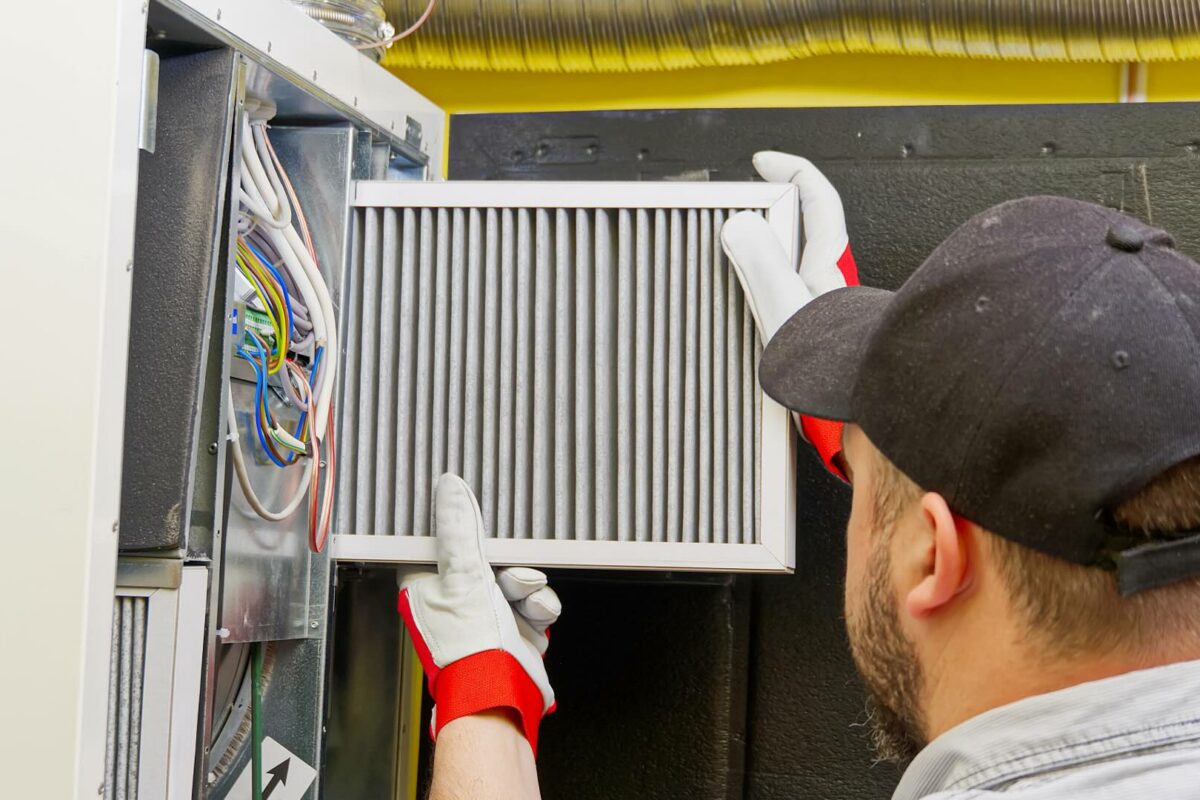The Biden-Harris Administration publicly committed to the prioritization of indoor air quality (IAQ) to effectively prevent the spread of COVID-19 and other airborne diseases. This announcement comes after months of implementing other cornerstone actions on improving indoor air quality:
Clean Air in Buildings Challenge
In March 2022, the Administration released a call to action and set of guiding principles for IAQ named the Clean Air in Buildings Challenge. In collaboration with the Environmental Protection Agency, Centers for Disease Control and Prevention, the Department of Energy and other Federal agencies, the Challenge presents a variety of suggestions and tools for enhancing ventilation and indoor air quality that are available to better safeguard building occupants’ health and lessen the chance of
COVID-19 transmission.
The guiding principles outlined in the Challenge, along with billions of dollars in funding through the American Rescue Plan for COVID19 mitigation, aim to improve ventilation in schools, government buildings, and elsewhere in the built environment.
White House Summit on Indoor Air Quality
In October 2022, the Administration brought together public health and ventilation experts, private sector and education leaders, and other stakeholders to “highlight the benefits of improved indoor air quality, showcase schools and businesses that are leading the way in making improvements, and underscore the importance of all building operators doing their part to create healthier indoor spaces.”
Acting as a precursor to the Administration’s latest announcement, the Summit called upon key leaders to take part in the Clean Air in Buildings Challenge, improve IAQ (particularly in schools), and encourage organisations that are leading the way with healthier buildings.
The latest commitment to cleaner indoor air
Now, the White House Office of Science and Technology Policy (OSTP), in partnership with Departments and Agencies, are committed to “using this moment to make long-term commitments to public healthy and pandemic preparedness that future generations can benefit from.”
The latest announcement outlines 5 key guidelines the administration aims to follow.
1. “Under the Biden-Harris administration, Departments and Agencies collectively commit to:Establishing the Federal buildings portfolio (with roughly 1,500 facilities across the US) as an ‘exemplar of innovation, implementations, and standards’ for IAQ through the following actions by the General Services Administration (GSA):
MERV-13 filters will be established as minimum filtration efficiency required in Federal building Heating, Ventilation, and Air Conditioning (HVAS) systems through the Facilities Standards for the Public Buildings Service. Standards apply to both new buildings and all system replacements of existing GSA-controlled federal buildings.
A national programme will be developed to confirm proper ventilation in buildings owned by the federal government and to be in line with the CDC’s and EPA’s Clean Air in Buildings Challenge.
Federal researchers and professionals will collaborate to carry out a real-world implementation study on the relationship between indoor air quality for building occupants and the design and operation of ventilation systems. In order to find prospective best practises, the study will examine the performance of buildings with various mechanical systems, controls, and operations.
2. “Continue funding research to improve understanding of airborne transmission, deployment of effective interventions, and communication of the benefits of indoor air quality.”
The First Annual Report on Progress Towards the Implementation of the American Pandemic Preparedness plan outlined future agenda points for reducing disease transmission in the built environment. It also included research and extramural funding from a wide range of organisations including the EPA Office of Development and DOE Building Technologies office.
3. “Develop a long-term research roadmap to coordinate Federal airborne infection research and support new areas of need.”
In order to identify research gaps, explore existing research on airborne infectious diseases, and provide recommendations, OTSP will launch an interagency Airborne Infection Research Fast Track Action Committee (AIR-FTAC).
4. “Provide guidance and funding for institutions and individuals to improve ventilation and filtration effectively and safely.”
Through the American Rescue Plan, $472 billion was available for improvements in indoor ventilation and filtration. Departments and Agencies have stated that they are committed to “continuing to develop science-based guidance on how to improve indoor air quality using both public and private funding” with one of they key points being to help schools plan and implement indoor air quality improvements.
5. “Expand incentives for making indoor air quality improvements in residential buildings.”
Now, builders can receive up to $5,000 of tax credit for each home that is certified to meet requirements of the Department of Energy Zero Energy Ready Home Program.
Content Team
Work in Mind is a content platform designed to give a voice to thinkers, businesses, journalists and regulatory bodies in the field of healthy buildings.




